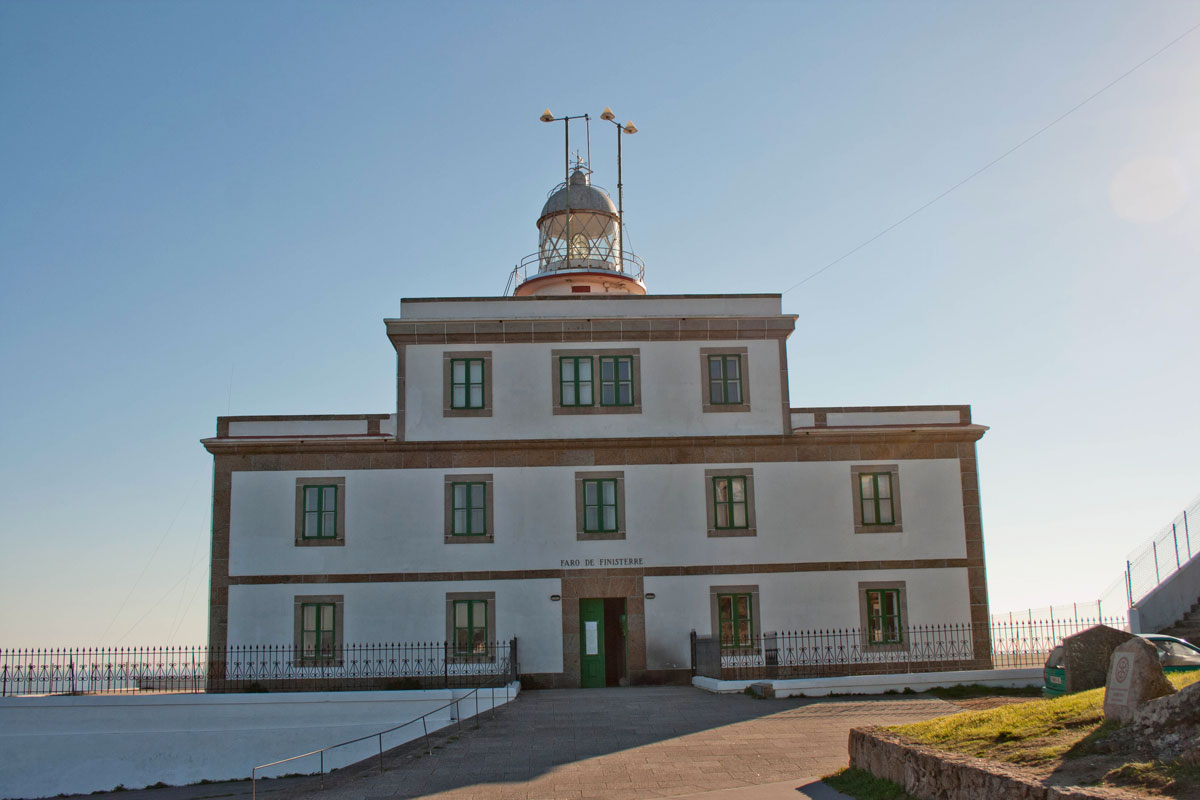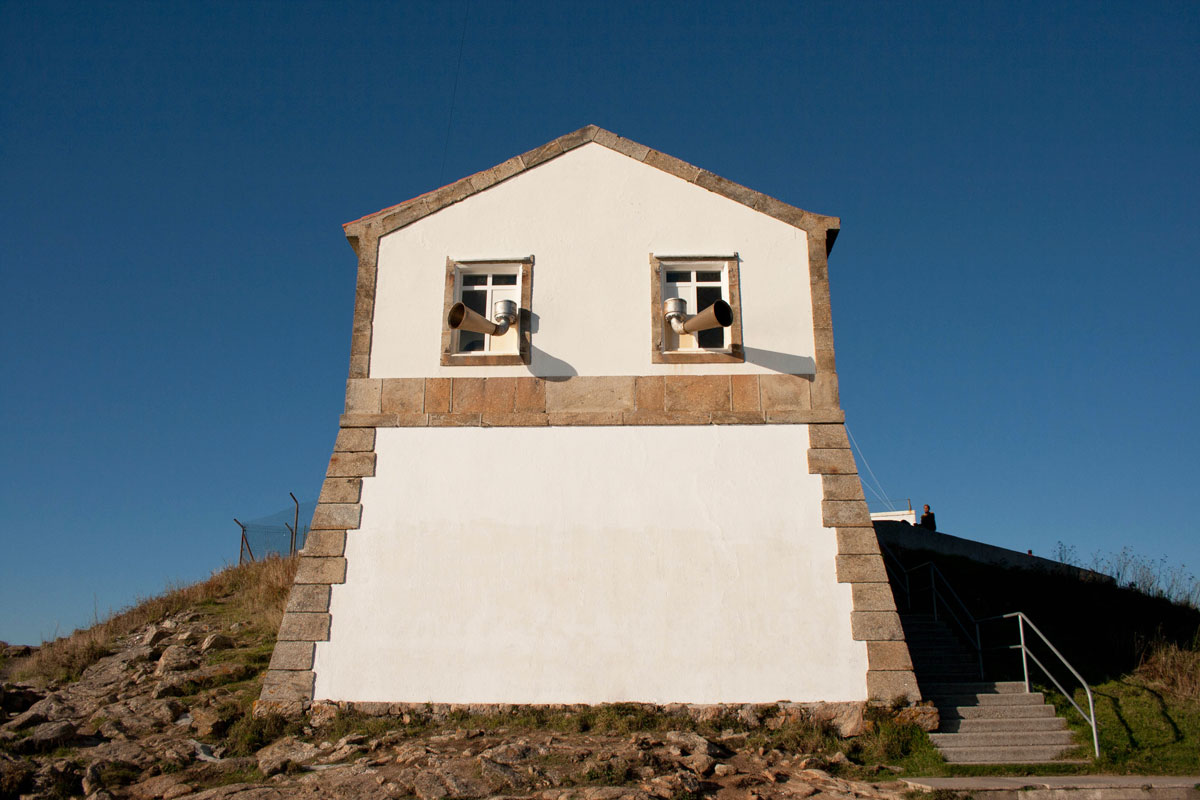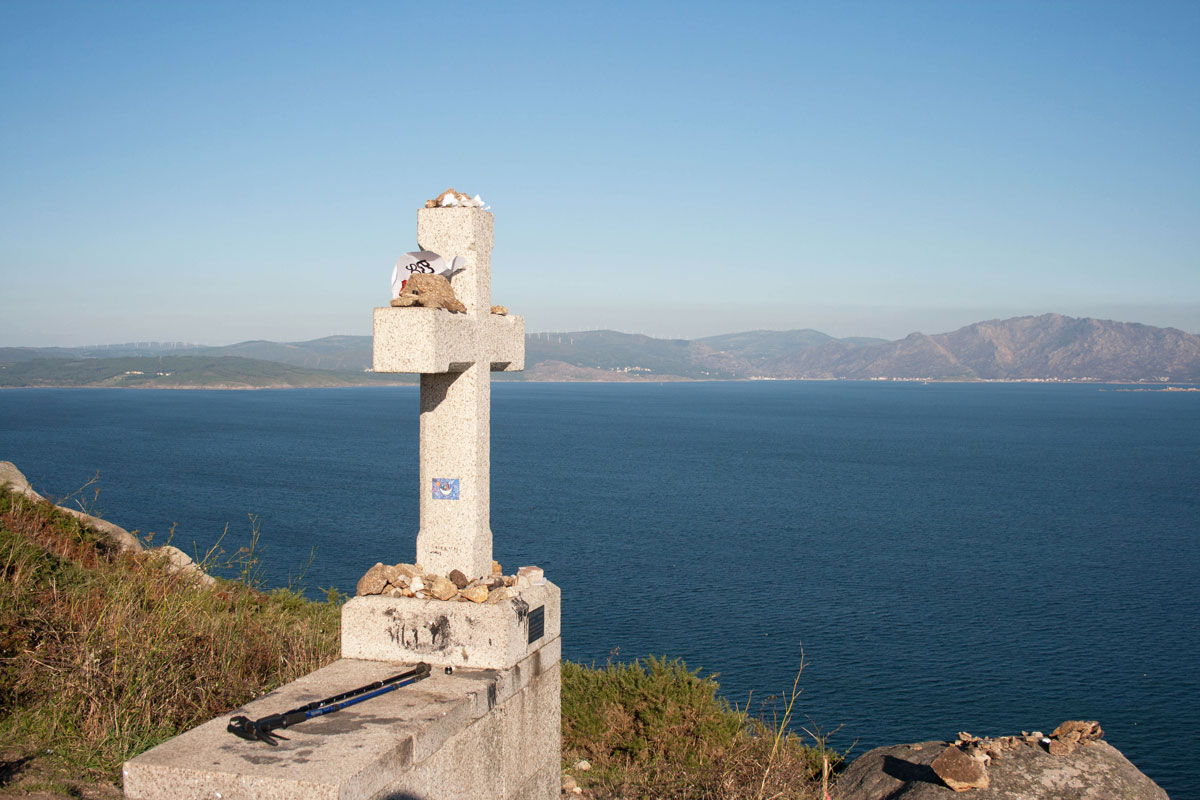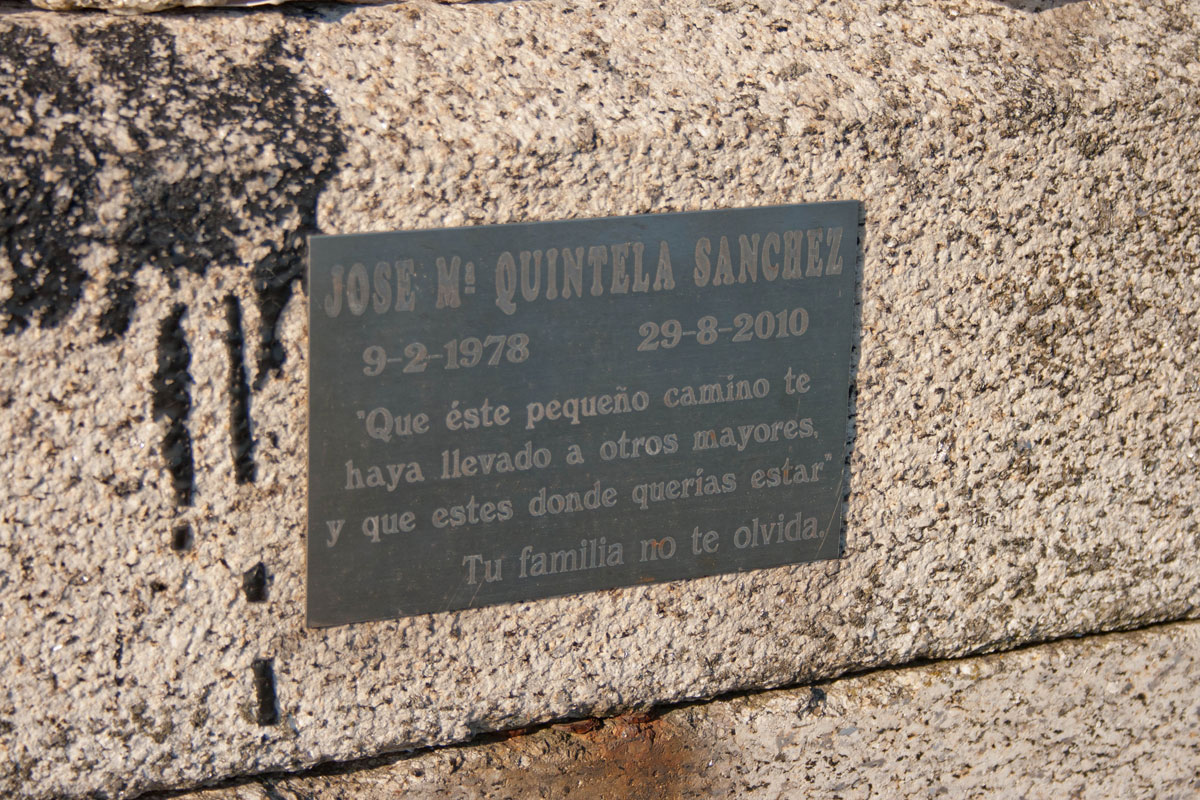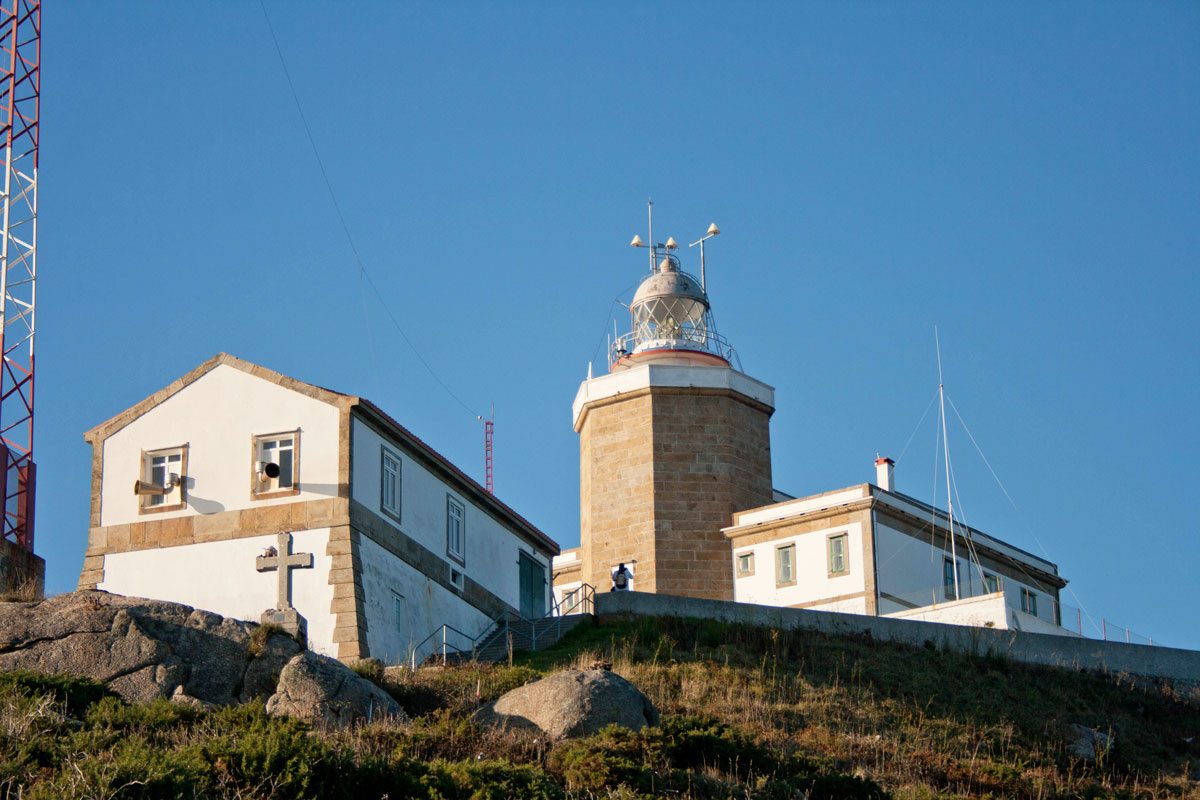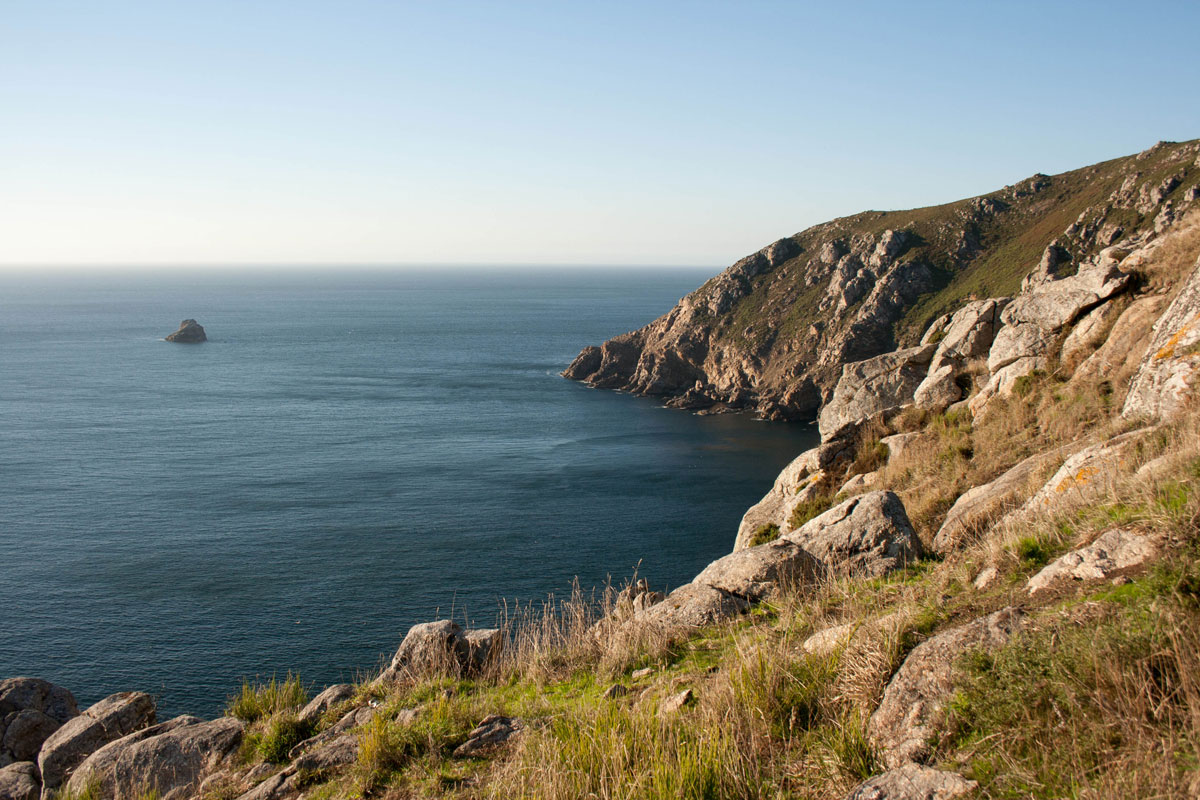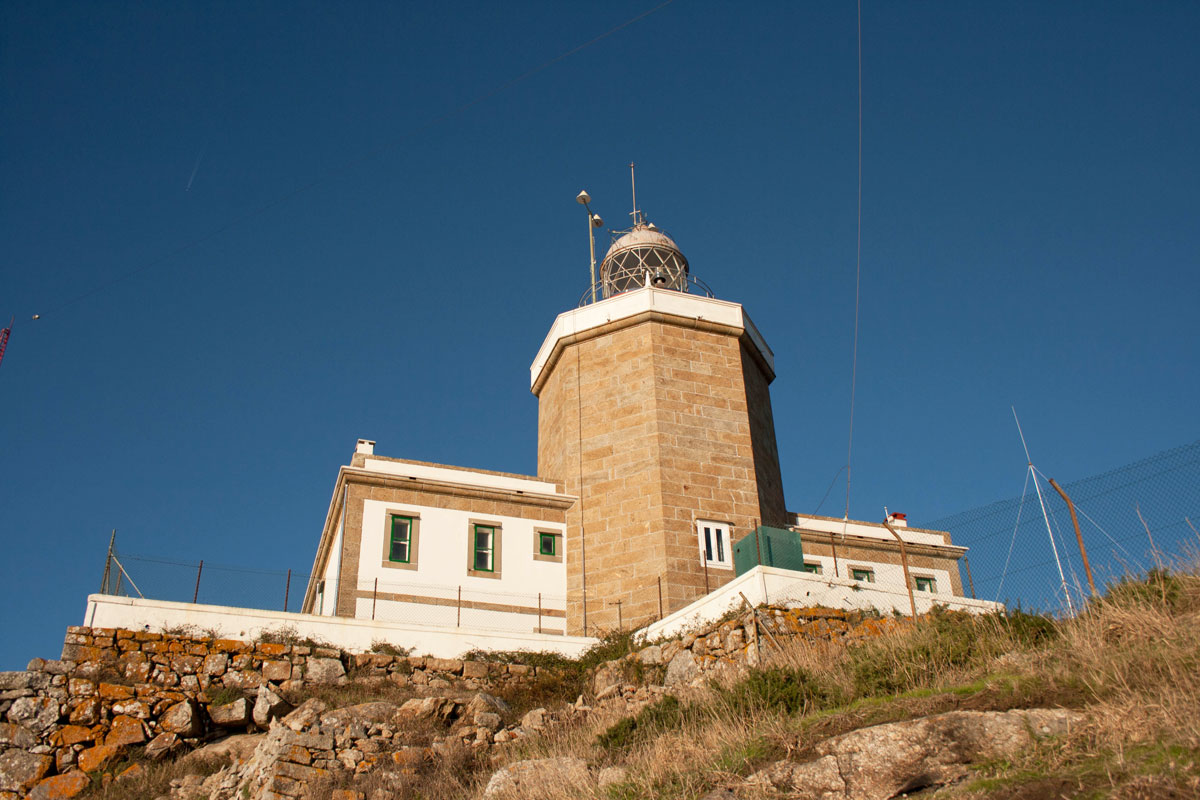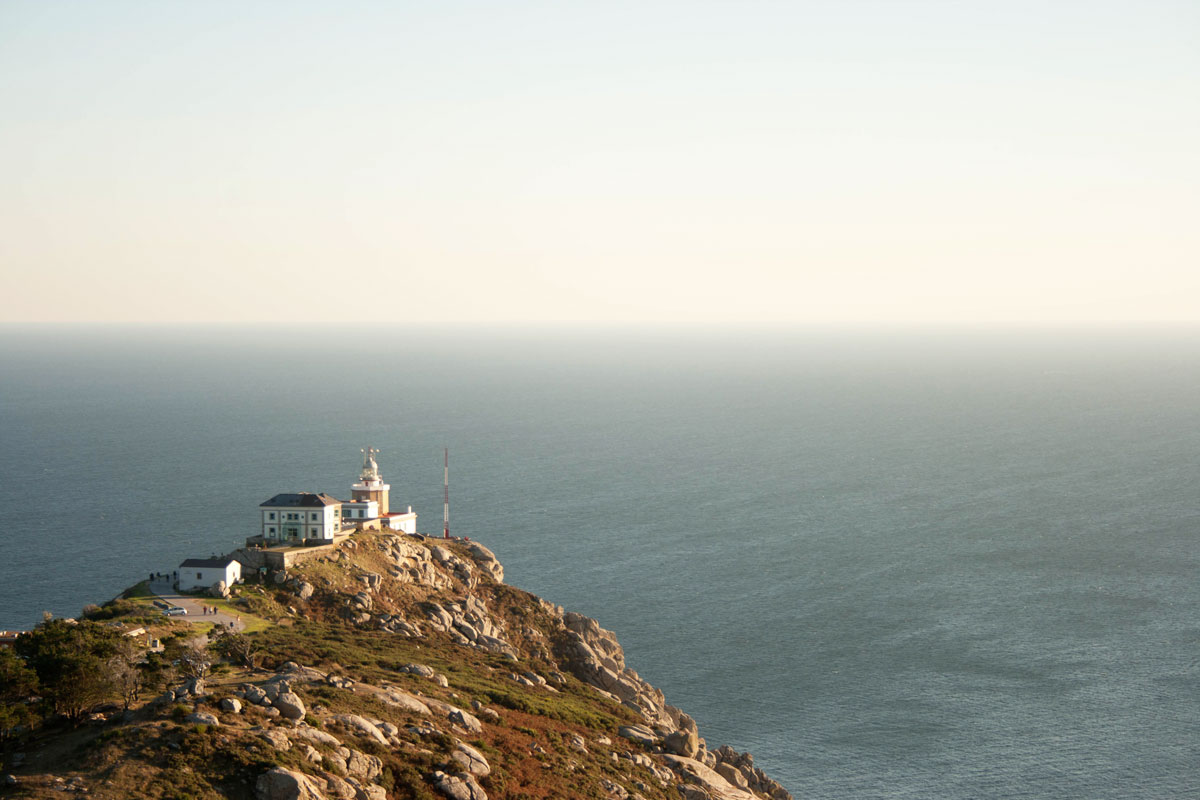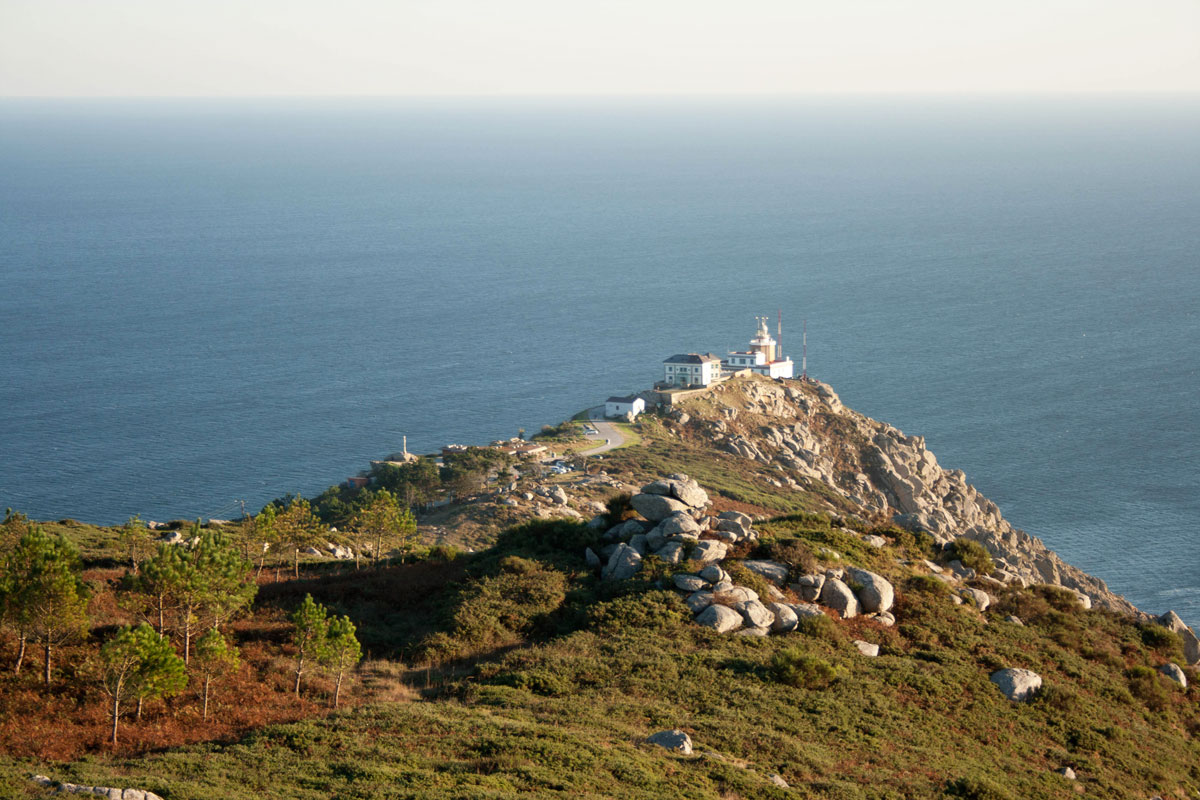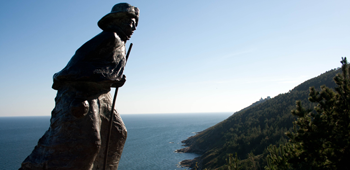Fisterra´s Lighthouse
It was built in 1853 at 138 meters above the sea, protecting one of the most dangerous coasts.
Location
This is the most western and emblematic lighthouse in Europe, it was traditionally considered the cape at the end of the world, "Finis Terrae".
This point extends over the sea about 5 kms southwards, parallel to the granite Pindo´s Mountain and forming the protected and beautiful Corcubión estuary.
For thousands of years it was thought that every night the sun went out in its waters, and that beyond it there was only a region of darkness and monsters.
Architecture
This building is part of an interesting set of lighthouse architecture.
The work was made by the engineer Félix Uhagón and it´s a first class lighthouse.
The tower which is made of stone, has an octagonal base and ends in a cornice where the balcony is located. Above it´s the vault with a polygonal lantern, 138 meters above sea level.
Originally the lighthouse operated with an oil lamp, but after different reforms it was electrified with incandescent lamps, emitting a flash every five seconds with a range of 31 nautical miles (57 km) in ordinary time.
The building next to the lighthouse is the Siren, which is popularly known as Fisterra´s cow. It was built by Ángel García del Hoyo and came into operation in 1889 for the days when fog prevented the light from being seen. It emits two strident sounds every minute, with a range of 25 miles (46 km) in average time.
The third building that makes up the architectural complex is O Semáforo,which is located higher than the lighthouse building. It dates back to 1879, and its original mission was send signals to the Navy. This building was restored by César Portela and is currenly a hotel.
Legend
There are authors who identify Fisterra´s Cape with the ancient Nerian promontory, and others said that in this place the cult of the sun was practiced, called the Ara Solis. Near this place there are some stones linked with religious legends, called the Holy Stones.
According with Lucio Floro, Décimo Junio Bruto, a classical historian, in 137 b.C., he arrived at this promontory and he did´t want to leave this place without seeing the sun sink into the sea.
O Centulo
From this emblematic lighthouse we can see the Centulo, which was known as the devil. Many ships such as the Captain, the Blas de Lezo or the Bitten, were wrecked here.
It’s located 700 meters from the coast and it rises 25 meters above sea level. The area arround this rock, which imitates the shape of the crustacean shell from which it is named, it´s a hard working area for sailors.

 Galego
Galego  Español
Español 
